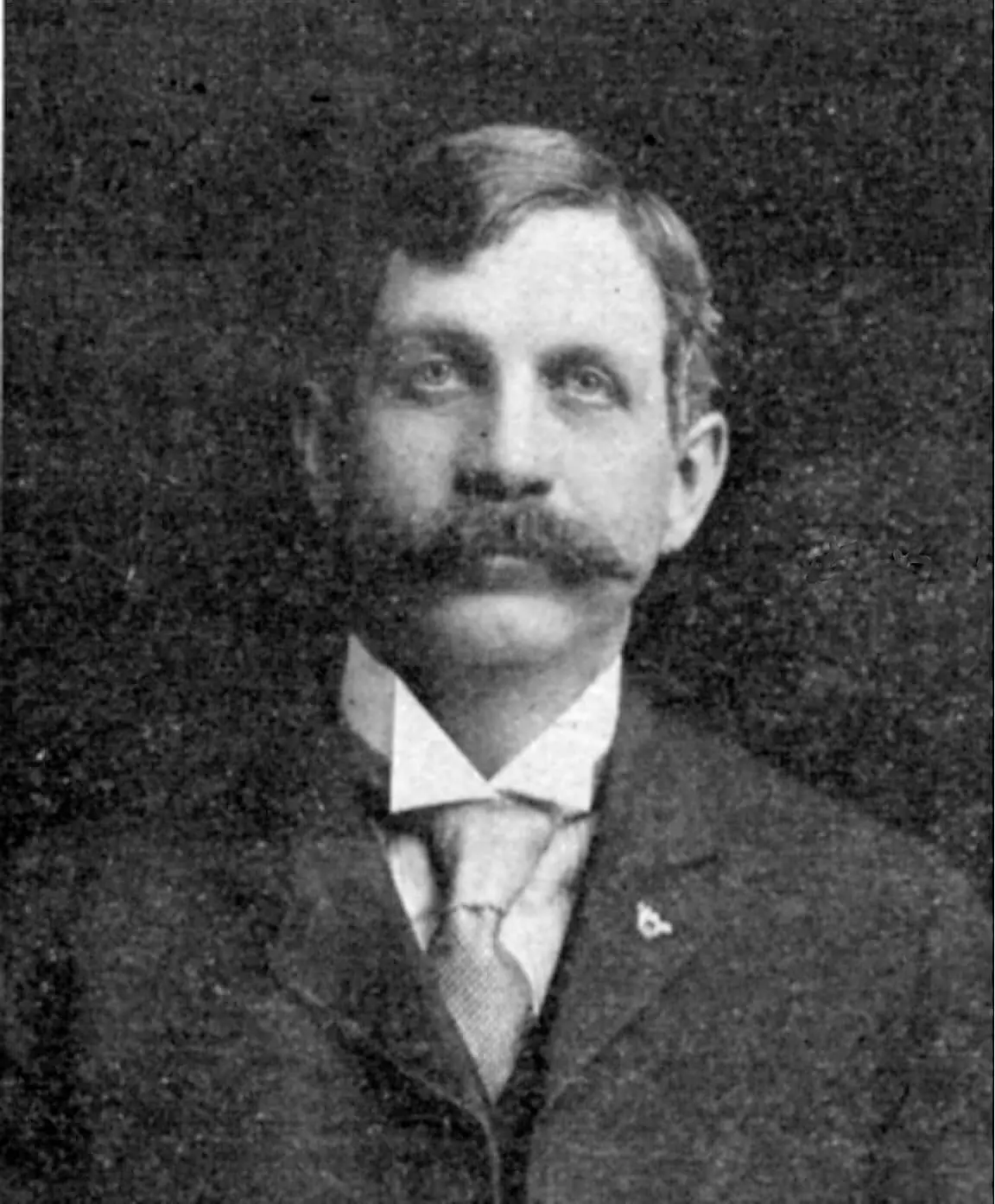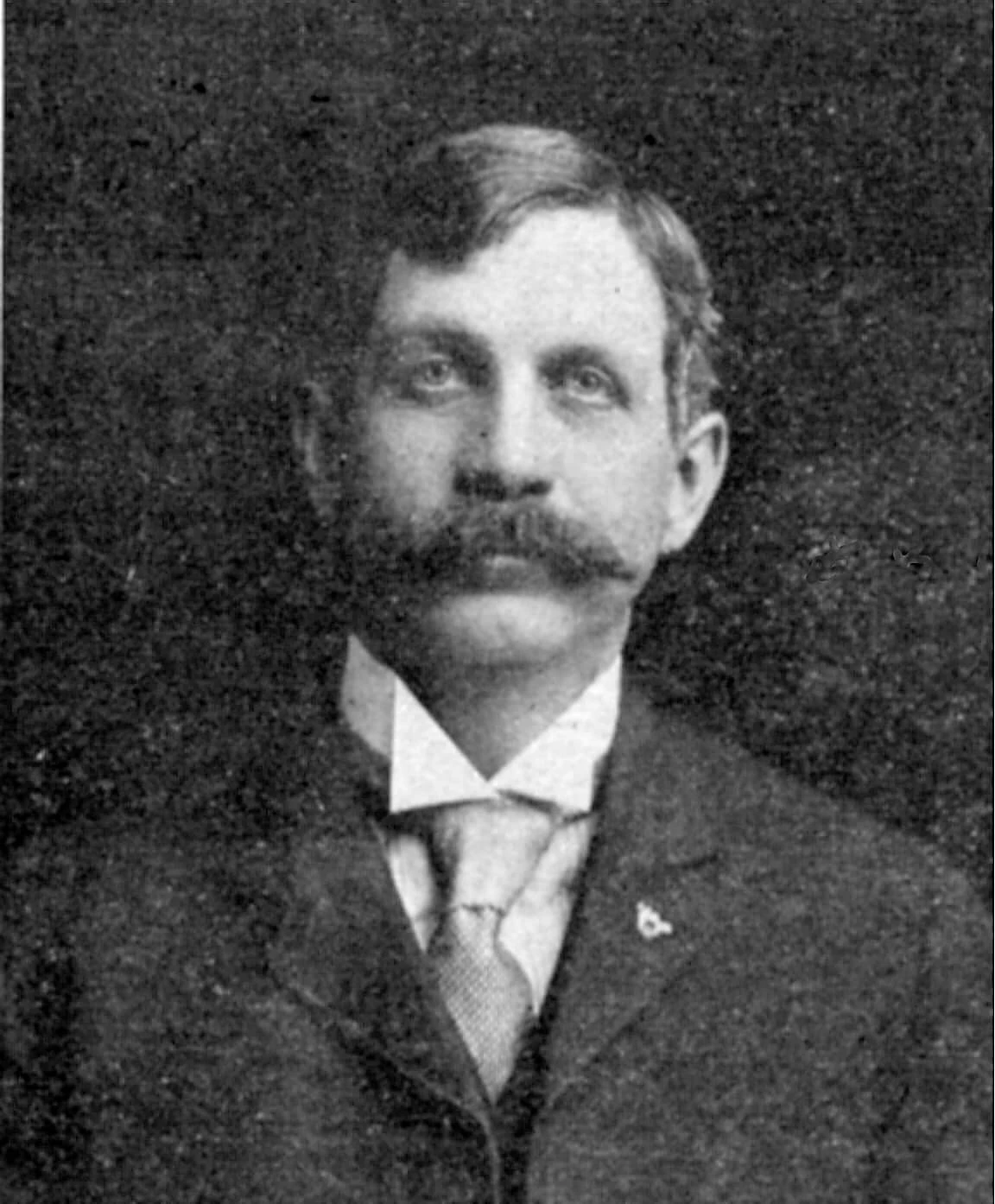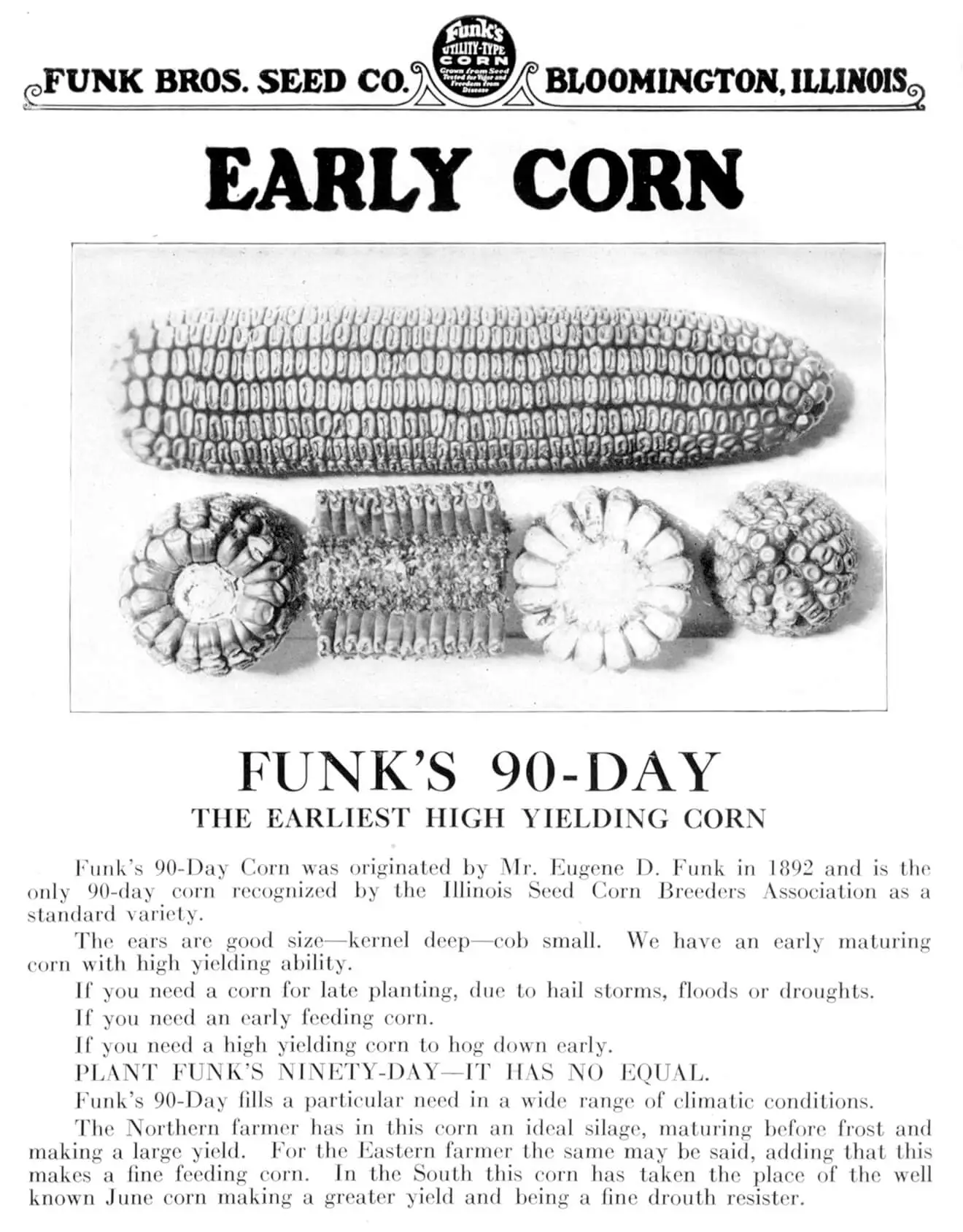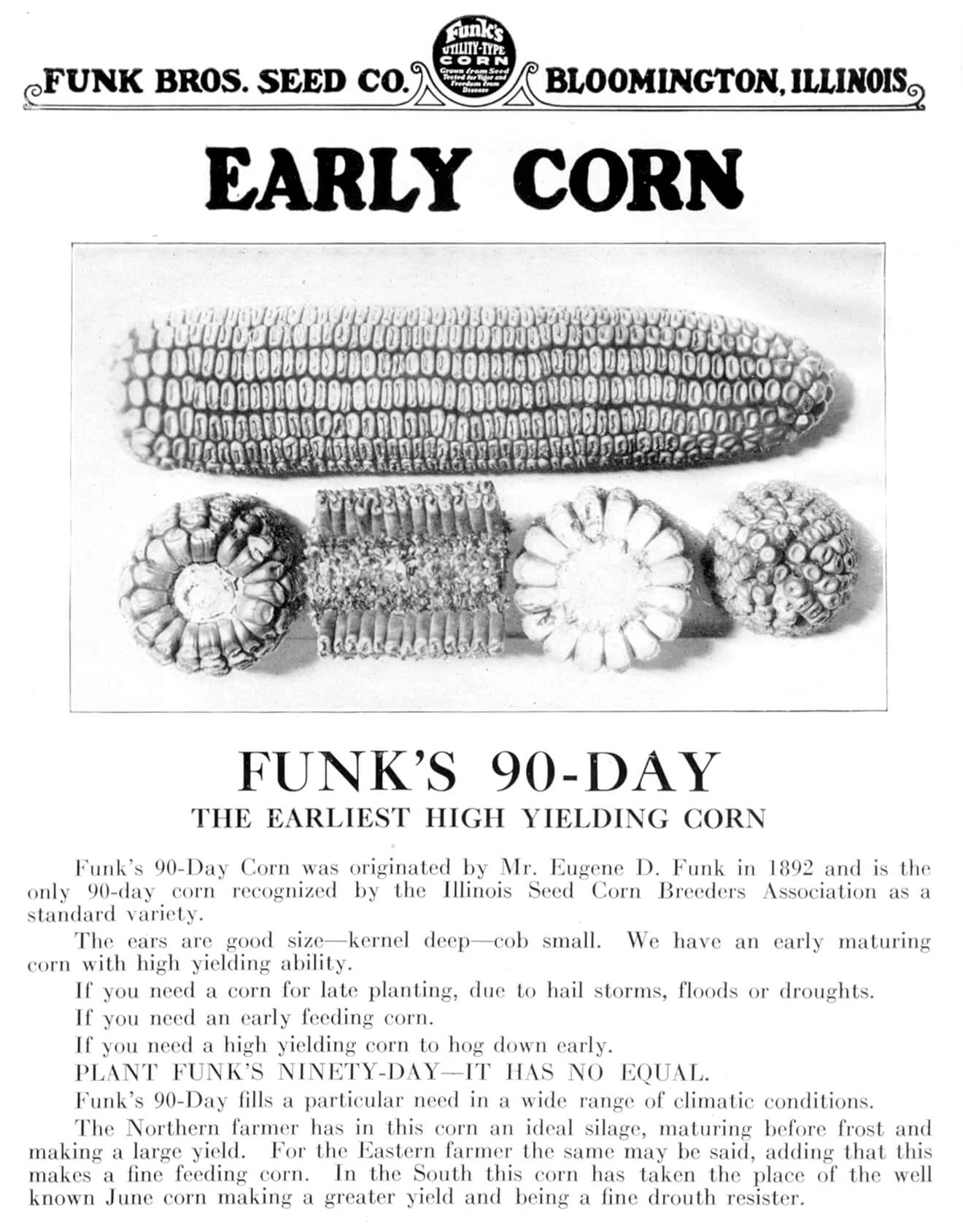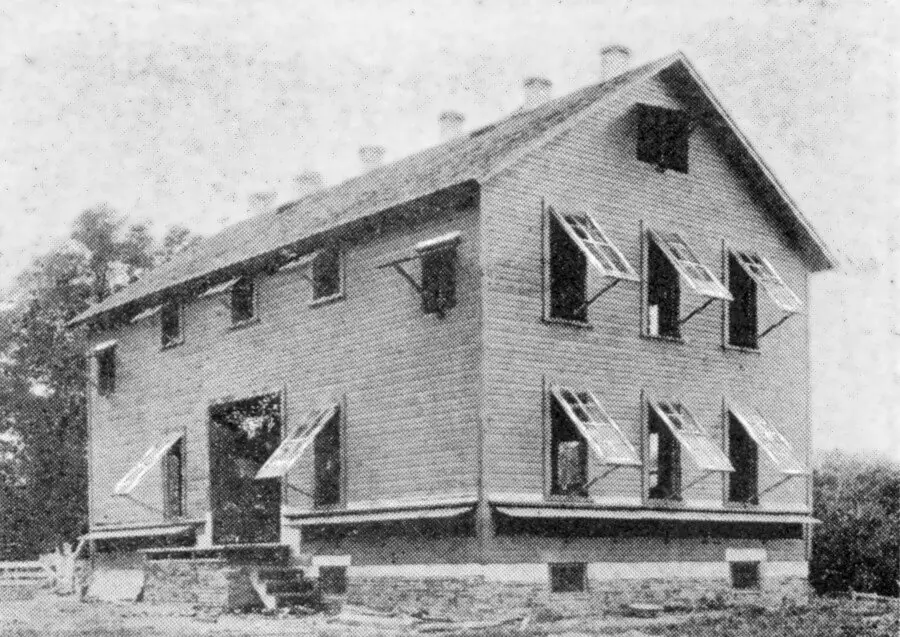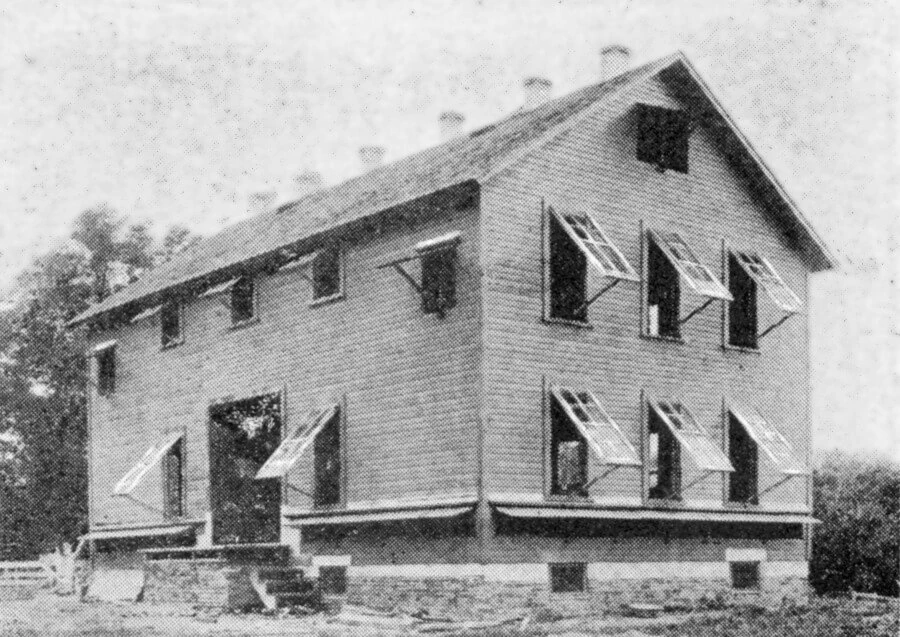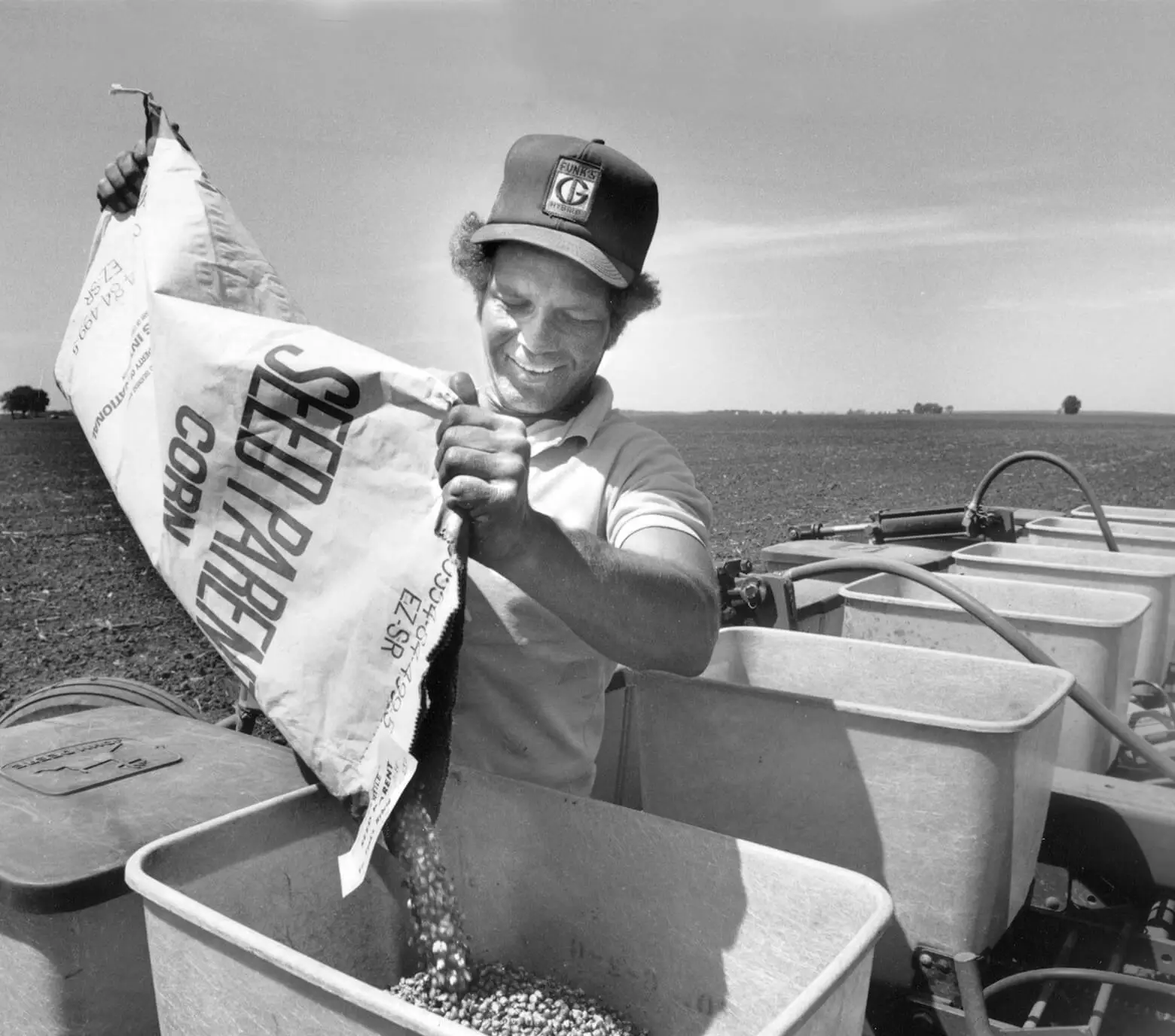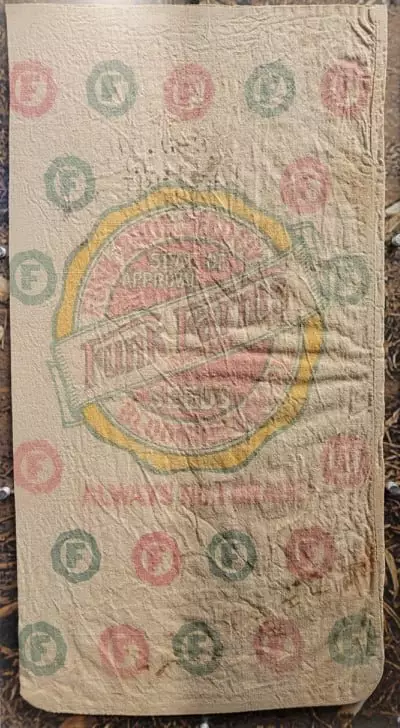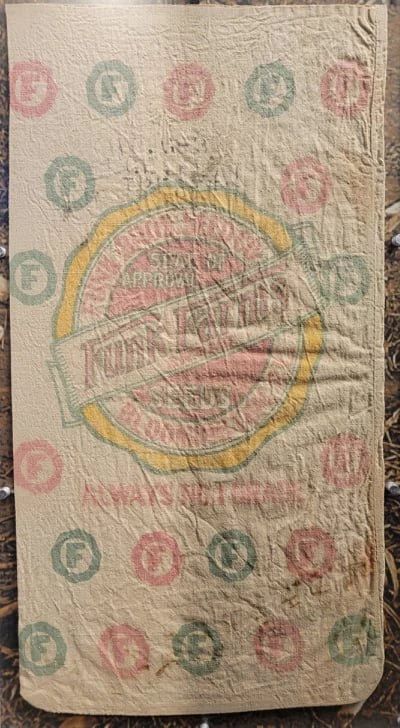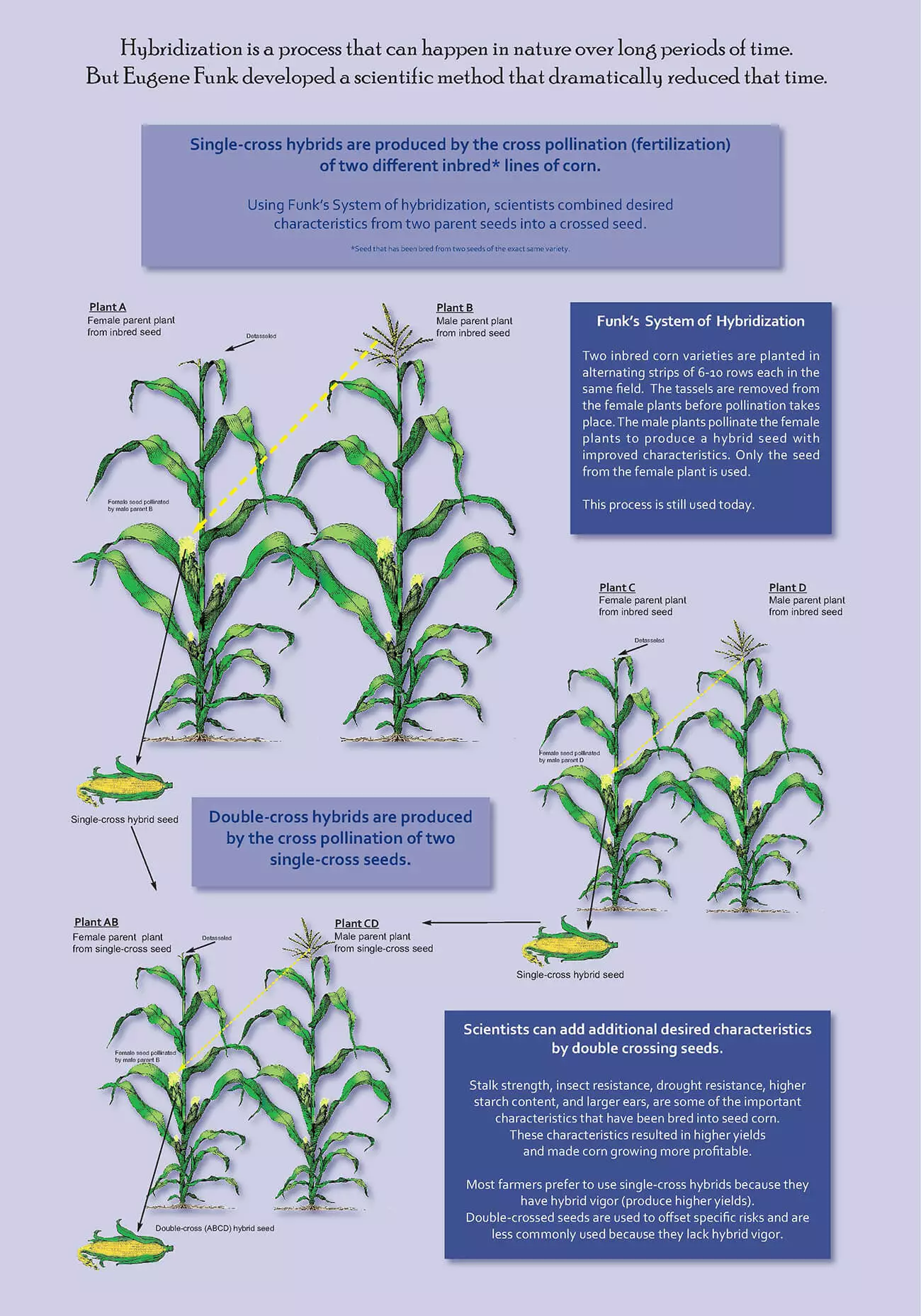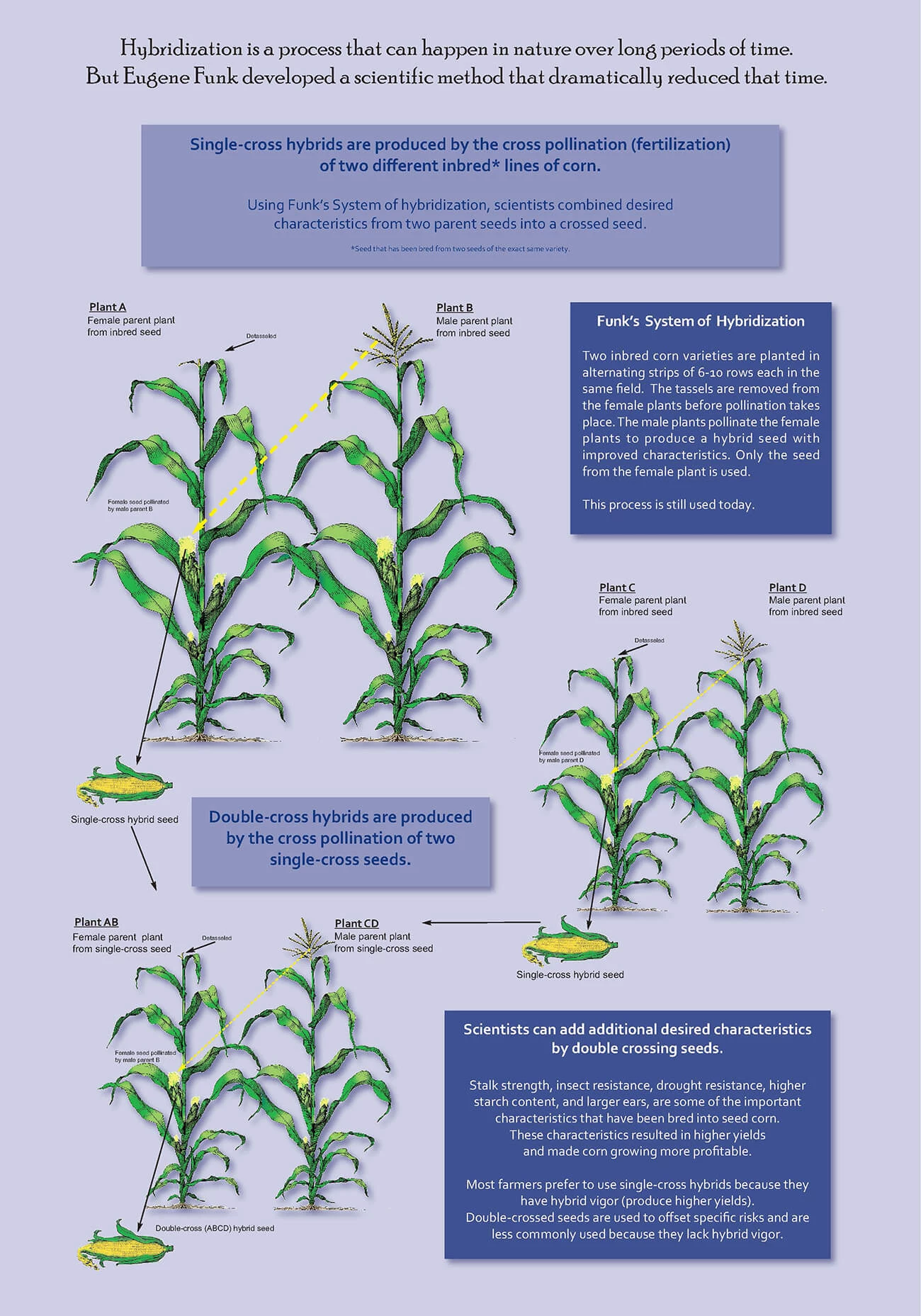Working the Land – A Scientific Revolution: Eugene Funk and Hybrid Corn
Eugene Funk
Eugene Funk (1867–1944) was the grandson of Isaac Funk, one of McLean County’s earliest settlers and arguably its greatest producer of livestock. The Funks’ success in livestock led them to consider how they might achieve similar advances with corn. Eugene studied science for three years at Yale, but chose to spend his fourth year in Europe, where the genetic theories of Darwin and Mendel were influencing scientific practices in plant breeding.
When he returned at the age of 25, breeding corn became his life’s work. His early successes resulted in the formation of the Funk Bros. Seed Company, which commercially produced the seed he and its research department, in partnership with the University of Illinois, developed and improved for many years.
By 1892 Funk was selling their 90-Day seed corn.
This crossbred corn matured earlier than what McLean County farmers were used to, and it produced greater yields.
Funks created this variety by crossbreeding a strain of Minnesota corn with an early maturing Illinois strain. It out-yielded both parents by 20 bushels per acre and was soon grown across the United States, as well as in Europe, Africa, and South America.
The Funk Bros. Seed Company incorporated in 1903.
In 1916 Funks produced its first commercial hybrid called the Tri-bred, which produced higher yields. Their process would soon lead to improved yields, as well as better resistance to insects, disease, and drought.
In 1922 Funks began selling their Double-Cross 250.
This hybrid became one of their most popular.
In 1927 Holbert’s “super-corn,” known as Hybrid No. 268, proved its merit when in five trials it averaged 84.15 bushels per acre and was free from corn ear rot, a disease that plagued McLean County corn that year.
Funks continued to crossbreed corn.
They developed strains with a combination of disease resistance, insect tolerance, improved germination, greater stalk strength (to withstand mechanical harvesting equipment and prevent stalk rot), quicker maturity, and specific leaf angle. Soybean research and seed production was also added.
What is hybridization?
Hybridization is a process that can happen in nature over long periods of time.
But Eugene Funk developed a scientific method that dramatically reduced that time.
Single-cross hybrids are produced by the cross pollination (fertilization) of two different inbred* lines of corn.
Using Funk's System of hybridization, scientists combined desired characteristics from two parent seeds into a crossed seed.
*Seed that has been bred from two seeds of the exact same variety.
Funk's System of Hybridization
Two inbred corn varieties are planted in alternating strips of 6-10 rows each in the same field. The tassels are removed from the female plants before pollination takes place. The male plants pollinate the female plants to produce a hybrid seed with improved characteristics. Only the seed from the female plant is used.
This process is still used today.
Scientists can add additional desired characteristics by double crossing seeds.
Stalk strength, insect resistance, drought resistance, higher starch content, and larger ears are some of the important characteristics that have been bred into seed corn. These characteristics resulted in higher yields and made corn growing more profitable.
Most farmers prefer to use single-cross hybrids because they have hybrid vigor (produce higher yields). Double-crossed seeds are used to offset specific risks and are less commonly used because they lack hybrid vigor
 Making a Home
Making a Home
 A Community in Conflict
A Community in Conflict
 Working for a Living
Working for a Living
 Farming in the Great Corn Belt
Farming in the Great Corn Belt
 Abraham Lincoln in McLean County
Abraham Lincoln in McLean County
